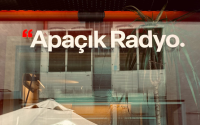7 October 2005Green Car Congress Toyota Motor Corp has developed a derivative of the Cherry Sage shrub that is optimized for absorbing pollutants from the air.
The new Kirsch Pink plant is reportedly 1.3 times more effective at absorbing NOx, SO2 and other air pollutants than its parent stock, the Cherry Sage. Toyota is targeting first-year sales of Kirsch Pink at 10,000 plants, priced at ¥380 (US$3.34) each.
The new plant, which flowers between May and November, also diminishes the urban heat-island effect 1.3 times more effectively than the Cherry Sage, according to the company.
The Kirsch Pink is the work of Toyota Roof Garden, established in 2001 as one of the businesses in Toyota's Biotechnology and Afforestation portfolio. Toyota established its Biotechnology and Afforestation Business Department and began research and development in January 1998. In May 1999, the Toyota Biotechnology and Afforestation Laboratory was established to layout the framework for research and development in the agricultural biotechnology field and to speed up Toyota's biotechnology business.
Toyota sees a linkage between the automotive industry and the biotechnology industries in that both are aiming to achieve a sustainable society. Toyota focused on aspects of agricultural biotech for three reasons:
An increase in world population, mainly in Asia.
An increase in the amount of food consumption per person due to a rise in the income level.
A decrease in farm and forest areas due to industrialization and urbanization, and food and water shortages due to an increase in water consumption and worsening of the global environment.
The pragmatic relationship between biotech and auto manufacturing can been seen in the use of bioplastics in new vehicles.
Toyota originally launched the Rooftop Garden business as a way to mitigate the heat-island phenomenon that is worsening with time in Japanese cities.






